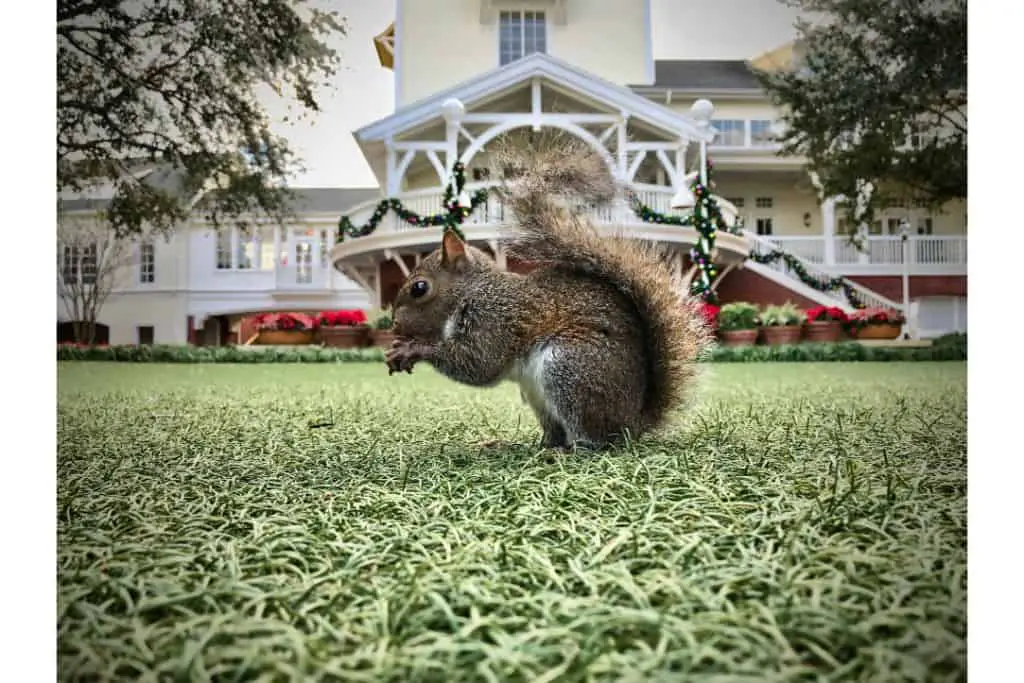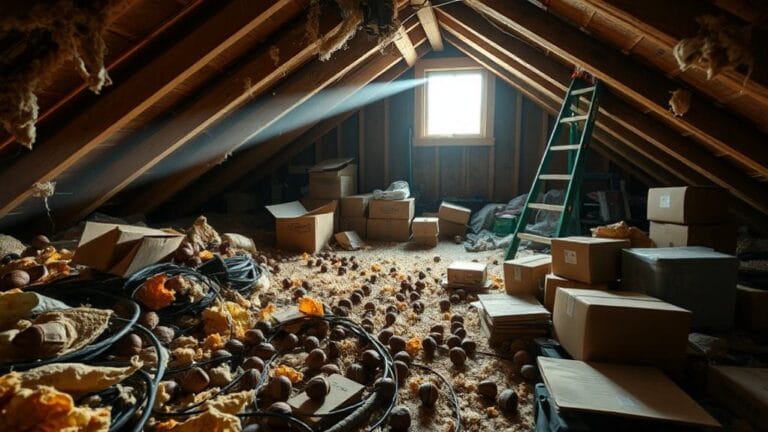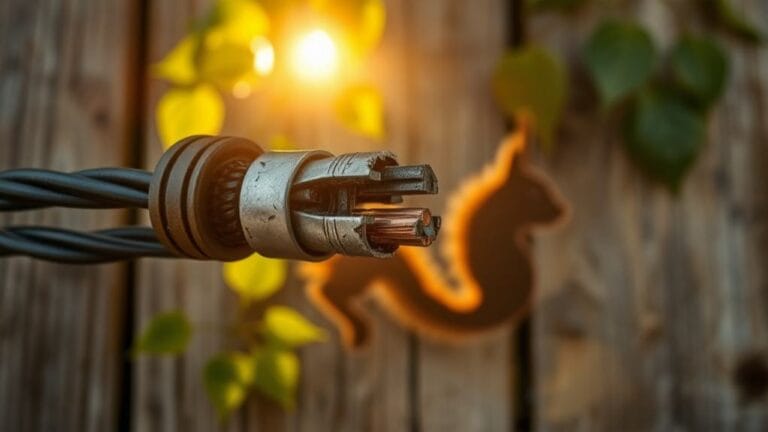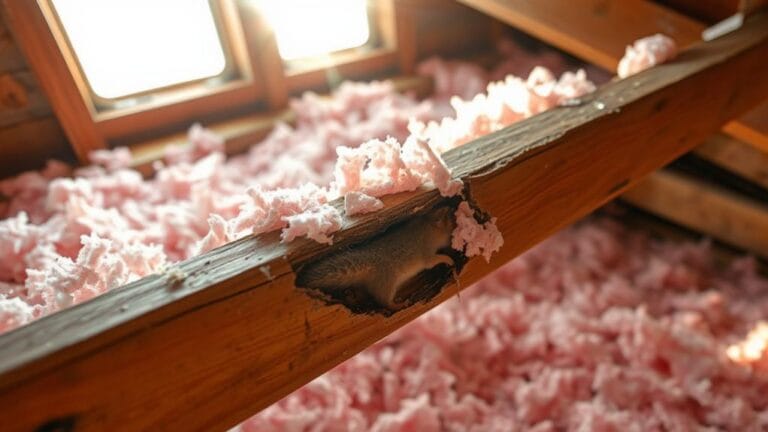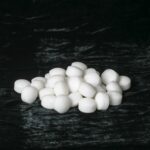Did you know that having a squirrel infestation in your walls can lead to significant damage if not addressed promptly? It may surprise you, but these furry creatures can wreak havoc on your home.
From gnawing through chimney flues and fascia boards to nesting in vents, squirrels can cause structural issues and pose potential health risks. So, how do you safely remove them from your walls?
Removing squirrels from your walls requires careful planning and execution. The process involves identifying entry points, trapping the squirrels humanely, and sealing off any access to prevent future infestations. Professional removal services are recommended for their expertise in handling these situations effectively.
We’ll provide practical tips on identifying their presence, understanding the potential damage they can cause, and outlining the necessary measures for removal. You can protect your home from further destruction by acting now and ensuring a squirrel-free living environment.
Identifying Signs of Squirrel Activity in Your Walls
Table of Contents
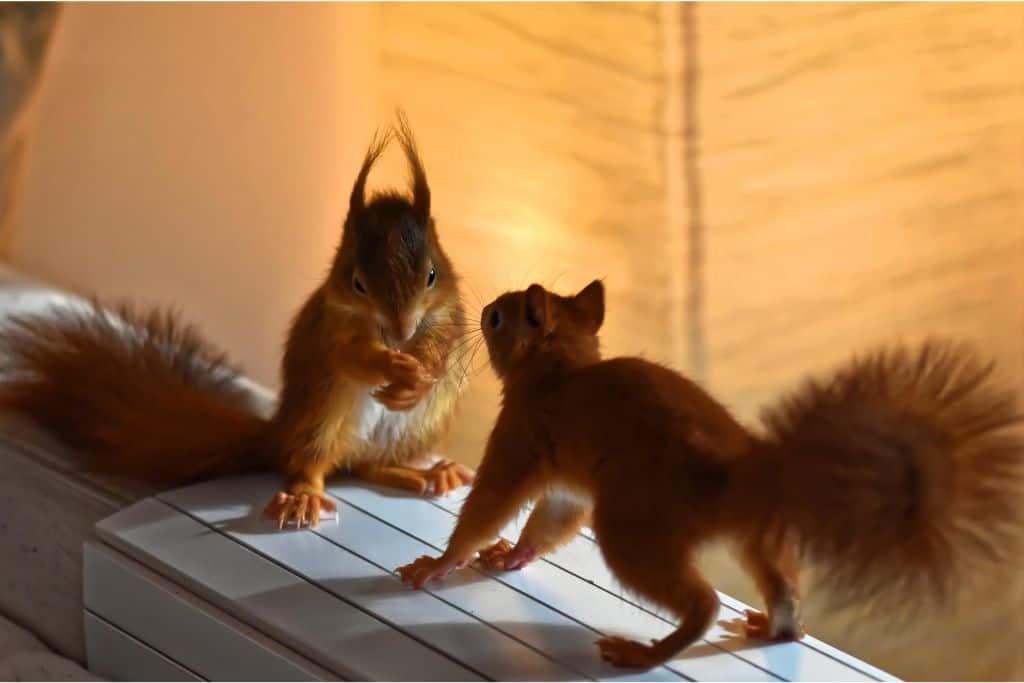
If you suspect that there might be a squirrel making itself at home inside your walls, it’s essential to identify the signs of their activity.
Here are some key indicators to look out for:
- Scratching or scurrying sounds coming from the walls: If you hear unusual sounds resembling scratching or scurrying from within your walls, it could be a sign of squirrels residing in the wall cavities. These animals are known for their agile movements and can easily navigate tight spaces.
- Visible gnaw marks on wood or wires: Squirrels use sharp teeth to chew various objects, including wood and wires. Seeing bite marks on wooden structures or wires around your home could indicate squirrel activity within the walls.
- Presence of squirrel droppings near wall openings: Keep an eye out for squirrel droppings near any gaps in your walls. These droppings are usually small and resemble pellets. Finding them close to wall openings suggests squirrels have used those entry points.
By observing and paying attention to these signs, you can determine whether squirrels have taken up residence inside your walls. It is essential to address this issue promptly, as it may lead to further damage and potential health hazards if left unattended.
Catching Squirrels in Walls: Effective Techniques and Tools
If you find yourself with a squirrel problem inside your walls, there are several ways you can safely and effectively catch them without causing harm. Here are some methods to consider:
- Using live traps: Live traps are a humane option for trapping squirrels. Place the trap near the hole or entry point where the squirrels enter the wall. Once captured, release them far away from your home.
- Utilizing one-way exclusion doors: Install one-way exclusion doors over the entry points in your walls. These doors allow squirrels to exit but prevent them from re-entering. This method ensures they leave your walls without getting trapped inside.
- Employing humane deterrents: Bright lights or loud noises can encourage squirrels to leave independently. Try using these deterrents near the area where they are nesting in your wall.
When attempting to catch squirrels in your walls, keep these tips in mind:
- Block potential entry points with wire mesh or steel wool to prevent new squirrels from entering.
- Use vinegar as a natural repellent by soaking a cloth and placing it near their nest.
- Take extra caution if baby squirrels are involved; it’s best to contact a professional wildlife removal service for assistance.
Repairing Entry Points to Prevent Squirrel Nesting
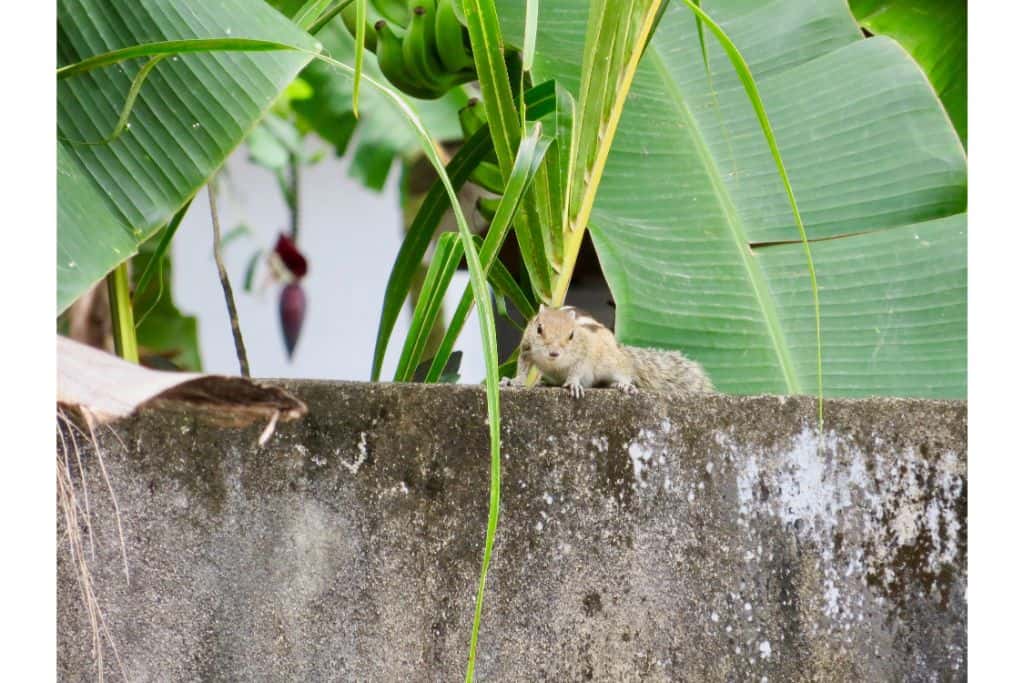
Inspecting the exterior walls of your home is crucial in identifying potential entry points for squirrels. Look for gaps or holes these critters can exploit to gain access. Once you’ve located these entry points, it’s time to seal them off effectively.
Here are some steps you can follow to repair entry points and prevent squirrel nesting:
- Identify the main entry point: Determine the primary opening through which squirrels enter your wall. This might be a more giant hole or gap than other potential entry points.
- Seal off the main entry point: Use sturdy materials like steel mesh or caulk to close up the main entrance. Ensure the chosen material is strong enough to withstand squirrel attempts at re-entry.
- Inspect and seal other potential entry points: Conduct a thorough inspection of your exterior walls, paying attention to any additional gaps or holes that could serve as secondary entry points for squirrels. Seal these openings using the same materials as before.
- Consider ventilation: While sealing off access points, you must not compromise proper ventilation in your home. Make sure there is still adequate airflow in the area you’re repairing.
DIY Methods for Removing Squirrels from Walls
Disturbance is the Key
- Play loud music to create a disturbance that will encourage the squirrel to leave.
- Use ultrasonic devices designed to repel squirrels and other pests.
Strong Smells can Drive them Away
- Place ammonia-soaked rags near openings in the wall.
- The pungent smell will deter squirrels from staying inside.
Motion-Sensitive Sprinklers as a Deterrent
- Install motion-sensitive sprinklers near the affected areas.
- When a squirrel comes near, the sprinkler will activate and scare it away.
Getting a squirrel out of your wall can be a challenging task. However, you can try several DIY methods before seeking professional help.
Creating a disturbance effectively makes the squirrel uncomfortable and encourages it to leave independently. Playing loud music or using ultrasonic devices can disrupt their peace, causing them to seek shelter elsewhere.
Another strategy is to use strong-smelling substances like ammonia. Placing ammonia-soaked rags near wall openings creates an odor that squirrels find unpleasant. This scent will discourage them from staying inside your walls.
Installing motion-sensitive sprinklers near the affected areas is another option worth considering. These sprinklers detect movement and activate when a squirrel approaches. The sudden burst of water startles them, prompting them to flee from your walls.
Remember, when dealing with squirrels in your walls, patience is vital. It may take some time for these methods to work effectively. If all else fails, don’t hesitate to contact a professional who specializes in wildlife removal.
Seeking Professional Help for Squirrel Removal
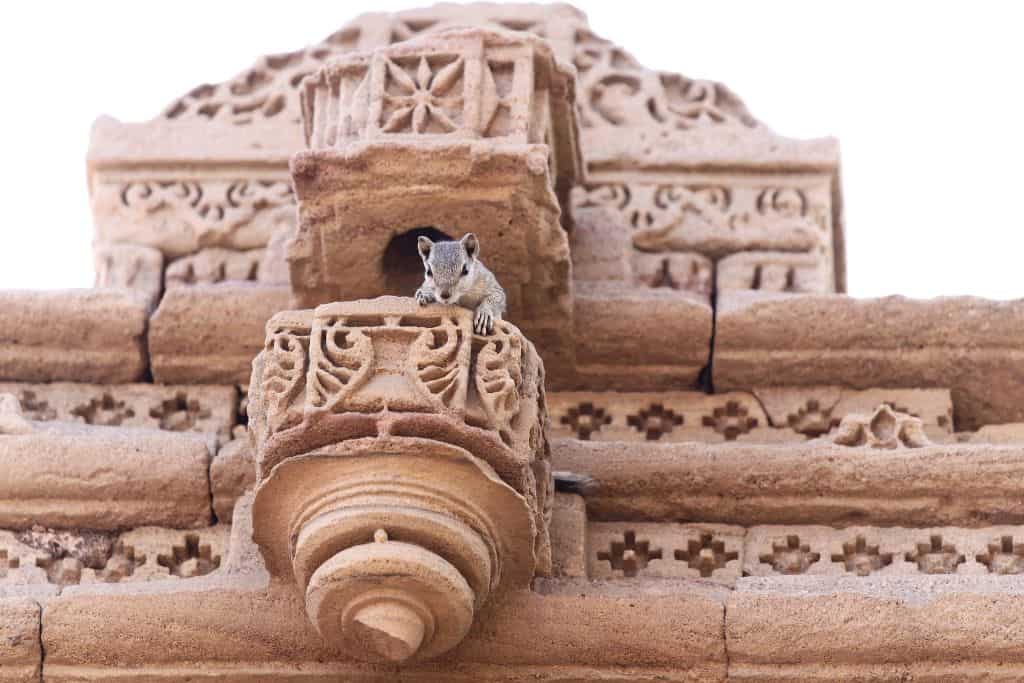
If you face a squirrel infestation on your walls, seeking professional help is essential.
Hiring licensed wildlife removal experts specializing in handling squirrel problems can make all the difference. These professionals have the experience and knowledge to safely and efficiently remove squirrels from your walls.
Here are a few reasons why contacting professionals is the best course of action:
- Expertise: Professionals are well-versed in dealing with squirrel infestations. They understand the behavior of these animals, including mother squirrels who may have nested in your walls. Their expertise allows them to tackle the problem effectively.
- Safety: Removing squirrels on your own can be risky. Squirrels may bite or scratch if they feel threatened, potentially causing harm to both you and themselves. Wildlife removal experts know how to handle these situations safely, minimizing potential risks.
- Efficiency: Professionals come equipped with specialized equipment that aids in squirrel removal. From traps and baits to exclusion devices, they have the tools to address the issue quickly and efficiently.
- Peace of Mind: Dealing with a squirrel infestation can be stressful and overwhelming for many people. By hiring professionals, you can rest assured that trained individuals are handling the problem for you, giving you peace of mind.
When faced with a squirrel problem in your walls, don’t hesitate to contact a reputable wildlife removal company or expert near you. They will assess the situation, develop an appropriate action plan, and safely remove these unwanted guests from your home.
FAQs
Can squirrels cause damage inside my walls?
Yes, squirrels can cause significant damage inside your walls by gnawing on electrical wires, insulation, and structural components. This can lead to fire hazards, reduced energy efficiency, and costly repairs.
How do I know if there are squirrels on my walls?
Signs of squirrel activity in your walls include scratching or scampering noises, visible droppings or urine stains, chewed wires or insulation, and an unpleasant odor caused by their urine.
Are there any DIY methods I can try before calling a professional?
You can use deterrents like bright lights or loud noises near the entry points to encourage squirrels to leave. However, remember that these methods may not always be effective and could escalate the problem.
Is it legal to trap and release squirrels on my own?
Laws regarding trapping and releasing wildlife vary by location. Checking with local authorities or wildlife agencies before attempting trapping activities is essential.
How long does it usually take to remove squirrels from walls?
The time it takes to remove squirrels from your walls can vary depending on the infestation’s severity and the chosen methods’ effectiveness. It’s best to be patient and persistent in your efforts.

